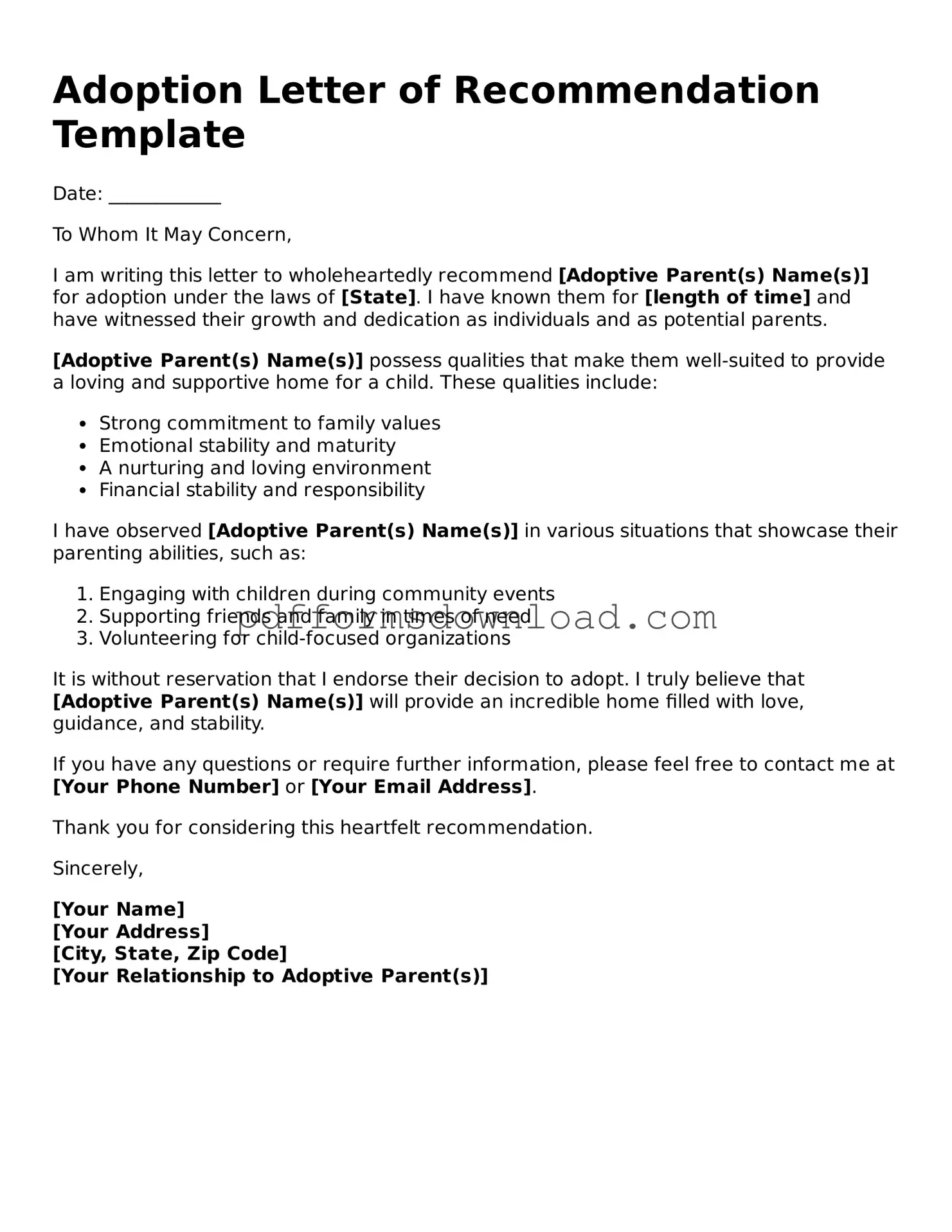What is an Adoption Letter of Recommendation form?
The Adoption Letter of Recommendation form is a document that provides a personal endorsement for individuals or couples seeking to adopt a child. This letter is typically written by someone who knows the prospective adoptive parents well, such as a friend, family member, or professional acquaintance. The purpose is to vouch for their character, parenting abilities, and overall suitability as adoptive parents.
Who should write the letter of recommendation?
It is advisable that the letter be written by someone who has a close relationship with the prospective adoptive parents. This could include friends, family members, teachers, or employers. The recommender should have a good understanding of the couple's values, lifestyle, and their readiness to take on the responsibilities of parenting.
What should be included in the letter?
The letter should include specific examples of the prospective parents' qualities and experiences that demonstrate their capability to provide a loving and supportive home. It should address their parenting style, commitment to family, and ability to handle challenges. Additionally, the recommender should express their confidence in the couple’s ability to nurture and care for a child.
How long should the letter be?
While there is no strict length requirement, a well-crafted letter typically ranges from one to two pages. It should be long enough to provide meaningful insights but concise enough to maintain the reader's attention. Clarity and relevance are key components of an effective recommendation letter.
Is there a specific format for the letter?
There is no standardized format for the Adoption Letter of Recommendation. However, it is recommended to use a formal tone and structure. The letter should start with the recommender's contact information, followed by the date, and then the recipient's information. A clear introduction, body, and conclusion will enhance readability and professionalism.
Can the letter be handwritten?
While a handwritten letter can add a personal touch, it is generally recommended to type the letter. A typed letter is easier to read and presents a more professional appearance. If a handwritten letter is preferred, ensure that the writing is clear and legible.
Where should the completed letter be sent?
The completed letter should be sent to the adoption agency or court that is handling the adoption process. It is important to check with the agency for any specific submission guidelines or requirements regarding the letter. Some agencies may require the letter to be included in the adoption application, while others may ask for it to be submitted separately.
